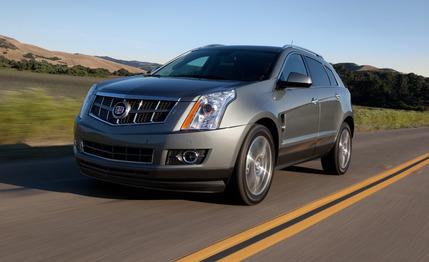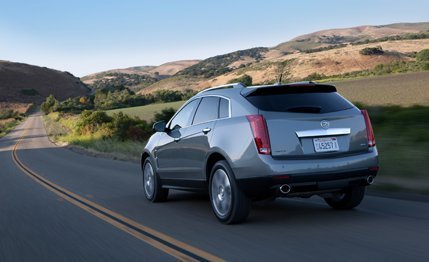
 Instrumented Test
Instrumented Test


It took Goldilocks considerably less time than Cadillac to settle on option three. When the current SRX launched for 2010, it came with a pair of V-6 engines, neither of which was to our liking. The base model had a 265-hp 3.0-liter, the optional engine was a Saab-sourced turbocharged 2.8-liter making 300 hp. Both of those are history for 2012, replaced by a single naturally aspirated 3.6-liter V-6. We’ve now tested SRX take three, here equipped with all-wheel drive.
To prove it can’t leave well enough alone when it comes to its hot-selling crossover, Cadillac announced changes for the 2013 SRX just after we tested this 2012; next year’s model will get the mildest of exterior aesthetic adjustments, a revised interior with Cadillac’s new CUE infotainment system, and a host of new nanny tech, including a driver’s seat that vibrates to get your attention when you’re doing your job wrong. But the mechanicals stand pat for a year, which means this 2012 drives the same as will the 2013. Just don’t forget to drive.
Which Bear is Best?
Whereas the 3.0-liter was too cold as far as output went and the 2.8-liter was too hot in the way it delivered power, this new 3.6 is just (about) right. Plenty of GM vehicles use this engine—it will be standard in the Cadillac XTS, for example—and here it makes a healthy 308 hp and 265 lb-ft of torque.


The 3.6 accelerates to 60 mph in the same time it took the all-wheel-drive turbo V-6 SRX (7.2 seconds) but that’s about all that matches up in straight-line testing. This new engine does a better job getting up and going, beating the 2.8 to 30 mph by 0.4 second. Beyond 60, however, the 2.8 had stronger pull, arriving at 120 mph 3.1 seconds quicker than the 3.6. Consider that most SRX drivers will spend more time between rest and 60 mph than they will banging into the speed governor and you’ll agree that the new setup is preferable. And anything is better than the surge-y turbo six’s odd and sometimes unpredictable power delivery. Plus, the lack of a turbo and its attendant lag yields a half-second-better 5-to-60 time in the 2012. We’ll miss Saab’s cars more than the lumpy 2.8 it provided.
Stop, Hey, What’s that Sound?
The 3.6’s ubiquity across GM’s various brands makes one quirk all the more surprising: It sounds really weird in the SRX. Like, more leaf blower than luxury crossover. The sucking sound from the intake creates an unpleasant drone with heavy applications of the right pedal; at wide-open throttle, the 3.6 is a not-insignificant four decibels louder than the 2.8 and the 3.0. Cadillacs generally have good sound deadening, but noise will keep you from exploring the more-powerful engine’s abilities.